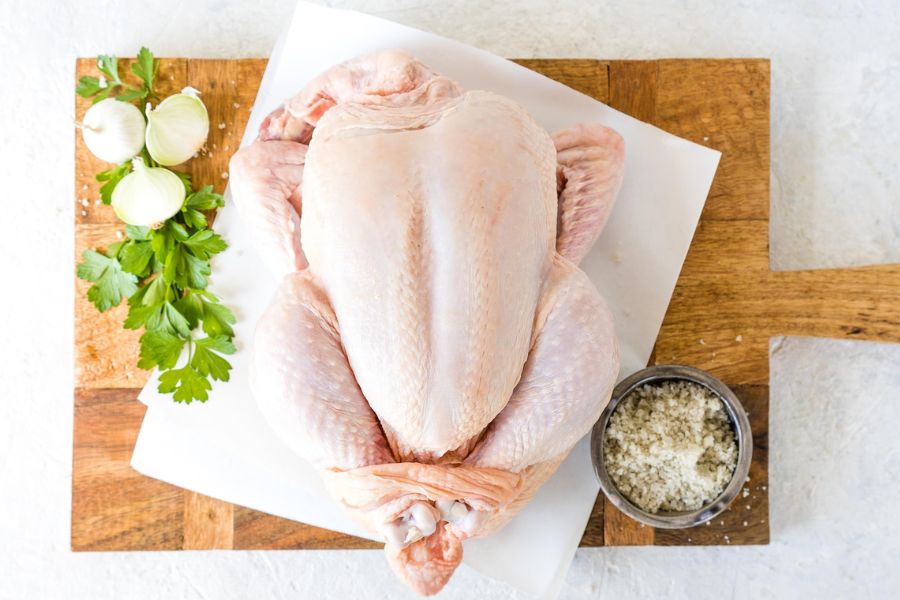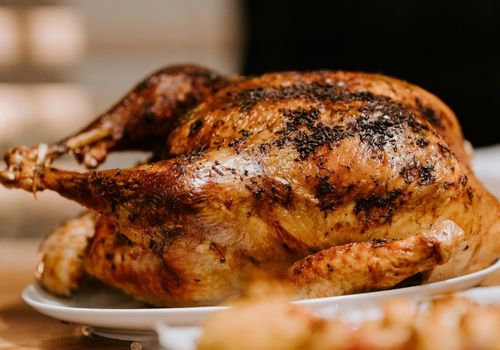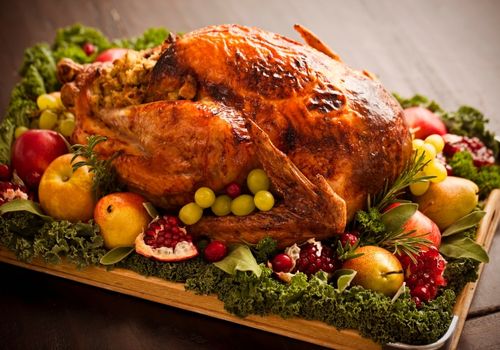If you love turkey like me, you’ve probably gotten a whole turkey from the market, especially ahead of Thanksgiving. Cooking a turkey requires several preparations and you may wonder if it’s safe to cook the turkey with the plastic clip on its leg. Well, it’s safe, but not recommended.
The plastic clip on a turkey or any raw poultry bird is there to hold the hind leg or hock in place. This gives the turkey a uniform appearance, making it easier to package. Using my experience as a professional chef, I will explain more about this topic. I’ll help you understand the pros and cons of leaving the plastic hock holder attached during the cooking process.

While hock locks are made of heat-resistant nylon or plastics, you may be tempted to leave them on a Turkey while it cooks. This practice is not always recommended.
The hock locks on turkeys are made to resist heat to make it oven-safe. So, if you are not deep-frying the turkey in hot oil, you can safely leave it on.
Another thing to watch out for is the pop-up indicator. This notifies you when the internal temperature of the meat reaches the recommended cooking temperature: 165 degrees Fahrenheit. It also contains plastics that can melt at higher than recommended temperatures. So, you should remove it along with the plastic leg holder when deep-frying the turkey.
There are many other reasons why you should not always leave the meat indicator on while cooking your turkey. However, before we delve deeper, let’s understand what a plastic indicator or hock lock is.
Related Reading
The plastic leg holder in a turkey, also known as the hock lock, is used to keep the turkey in shape for easier packaging.
You will find many plastics when you buy a full turkey from the grocery store. These are the hock lock, the giblet cover, and the pop-up indicator. I will explain each, and what they do.
This is a piece of plastic bound that is used to bind the leg (also known as the hock) of a bird. This prevents the bird’s legs from being floppy during preparation and packaging.
Because you will generally cook a turkey, the hock lock and indicator are made to be heat resistant. This way, they won’t be a hindrance to your cooking.
This is a timer that pops out of the meat when it is done. You will usually see this like a little button in the breast meat. The plastics are resistant to heat and shouldn’t be removed before cooking.
However, if you are deep-frying the turkey, you should remove the indicator. So you can use a meat thermometer to check the inner temperature of your turkey instead.
This is used to wrap the neck, liver, gizzard, and heart of a turkey. You will always find this wrapper inside your whole turkey.
Unlike the hock lock and indicator, giblet wrappers are rarely made of heat-resistant nylon or plastics. Sometimes, the wrapper can be paper or aluminum foil.

It depends. If the giblets are packed in paper or aluminum foil, and you did not notice any damage to the material after cooking, the turkey is safe to consume.
However, if the giblets are packed in plastic, and show signs that the plastic melts after cooking, I recommend disposing of it instead. Melted plastic is dangerous as it can produce harmful chemicals that can be hazardous to your health.
So, while the plastics in a turkey or other birds are generally safe to leave on the turkey while cooking, you shouldn’t do so if you are cooking at high temperatures. If the giblet cover is made of plastic, you should always remove it before cooking to avoid food poisoning.
I will explain more about why you should remove these plastics before cooking in the next section.
This is because the piece of plastic holder can cause the turkey to cook unevenly, and makes cleaning difficult.
The hock lock doesn’t allow the legs to spread out. This prevents heat from getting to those parts of the leg that aren’t exposed and prevents them from cooking properly. So, with the hock lock on, you can end up with an unevenly cooked turkey.
Also, I find the hock lock a disturbance whenever I want to clean my turkey before cooking. I can’t have access to the parts that remained unexposed as a result of the binding. So, I find it more practical to remove the hock lock for proper cleansing.
I have talked about how the melting of plastic can be hazardous to health in previous sections. It’s especially so for the giblet wrapper as it is not always made with heat-resistant nylon.
So, if you deep-fry your turkey at a high temperature, or the giblet wrapper is made of plastic. You should always remove them.
In general, I think removing every piece of plastic from your turkey (except the indicator) should be considered ideal. It’s just one of those extra steps to take while preparing turkey to ensure properly cooked and safe meat.
You can easily remove the hock lock with a pair of kitchen scissors.
The plastic hock lock is not resistant to cutting. So, if you have a pair of kitchen scissors or shears, you can disband your turkey legs with a stroke.

However, keep in mind that the hock lock is harder than your regular piece of plastic. So, you need sturdy scissors or shears. And you need some pressure to make this process seamless.
If for some reason, you also want the pop-up indicator gone, you can do so by pulling it out provided the turkey meat is thawed. It will be harder pulling out the indicator from a frozen turkey, so you may employ the tip of scissors or a knife to accomplish this task.
Related Reading
Hock locks are pieces of plastic used to bind the turkey’s legs. These are pretty common and you may wonder if it’s safe to remove them before cooking your turkey. I have explained what their usefulness is, and why you will not want to leave them on your turkey while cooking.